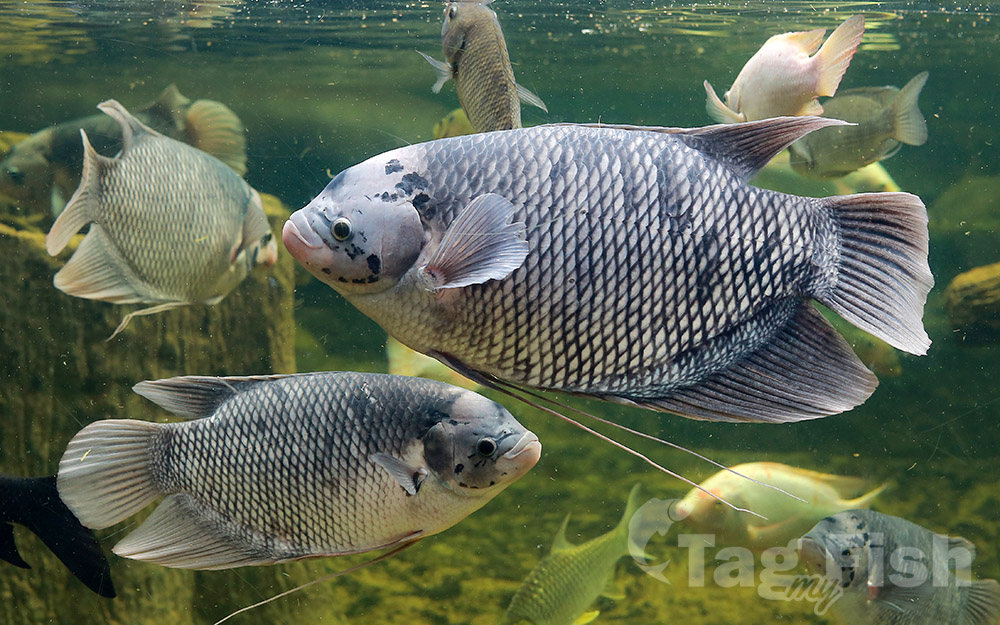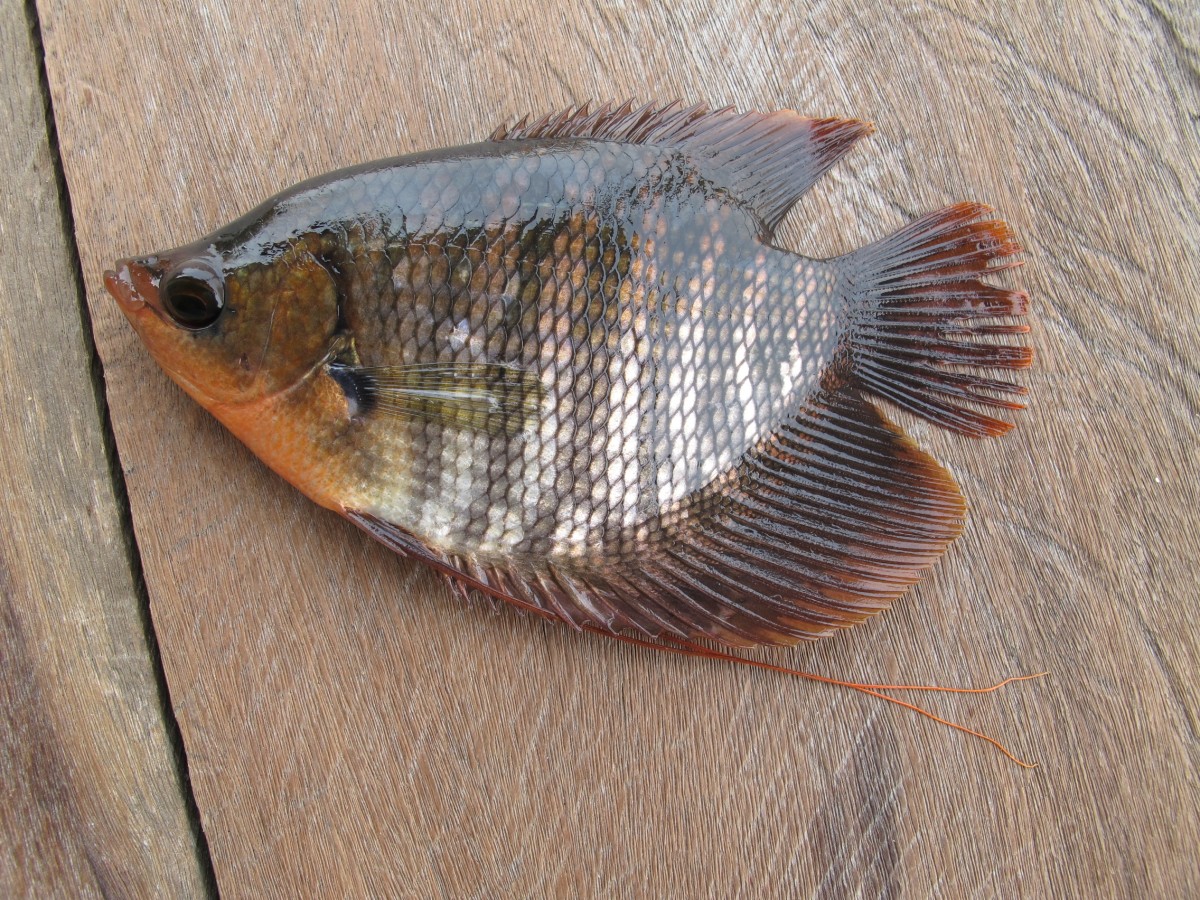Giant gourami
(Osphronemus goramy)

Classification
General data
The giant gourami (Osphronemus goramy) is a species of large gourami native to freshwater habitats in Southeast Asia. It has also been introduced elsewhere. The species is commercially important as a food fish and is also farmed. It can be found in the aquarium trade, as well. The species has been used for weed control on highly invasive aquatic plants like Salvinia molesta, as the giant gourami can be a voracious herbivore.
It is capable of breathing moist air, so can survive out of water for long periods. It is much larger than most gouramis (only the other Osphronemus species reach a similar size), growing to a maximum standard length of 70 cm (28 in), though most are only around 45 cm (18 in).
Distribution and habitat
The giant gourami is native to rivers, streams, marshes, swamps and lakes in Southeast Asia, from the lower Mekong of Cambodia and Vietnam, and Chao Phraya and Mae Klong of Thailand, as well as river basins in the Malay Peninsula, Sarawak of Malaysia, and Java, to Sumatra and Western Kalimantan of Indonesia.
However, the exact limits of the natural range are often labelled with uncertainty due to confusion with the other Osphronemus species (which only were scientifically described in 1992 and 1994) and the widespread release of giant gouramis outside their native range. For example, both the giant gourami and elephant ear gourami have been reported from the middle Mekong, and both the giant gourami and O. septemfasciatus have been reported from Borneo in the Kapuas River and river basins in Sarawak. However, middle Mekong records of the giant gourami are likely misidentifications of elephant ear gouramis (the only place in the Mekong basin where the giant gourami likely occurs naturally are in the southernmost part, like tributaries originating in the northern Cardamom Mountains). The presence of giant gouramis in Borneo is possibly the result of introductions. The final species in the genus, the giant red tail gourami, is restricted to Sabah where the others do not occur. This suggests that the different Osphronemus species originally had allo- or parapatric distributions.
Whether deliberate or by accident, giant gouramis have been introduced widely as food fish. In Asia, this has expanded their range to include an area from southern China to India and Sri Lanka, and in other continents they are now found in Australia, Mauritius, Réunion, Madagascar and elsewhere. Translocations within Southeast Asia likely started in ancient times. Even Europeans recognized its value as a food fish several hundred years ago. For example, Georges Cuvier (1769–1832) suggested that it should be introduced to the French colonies.











